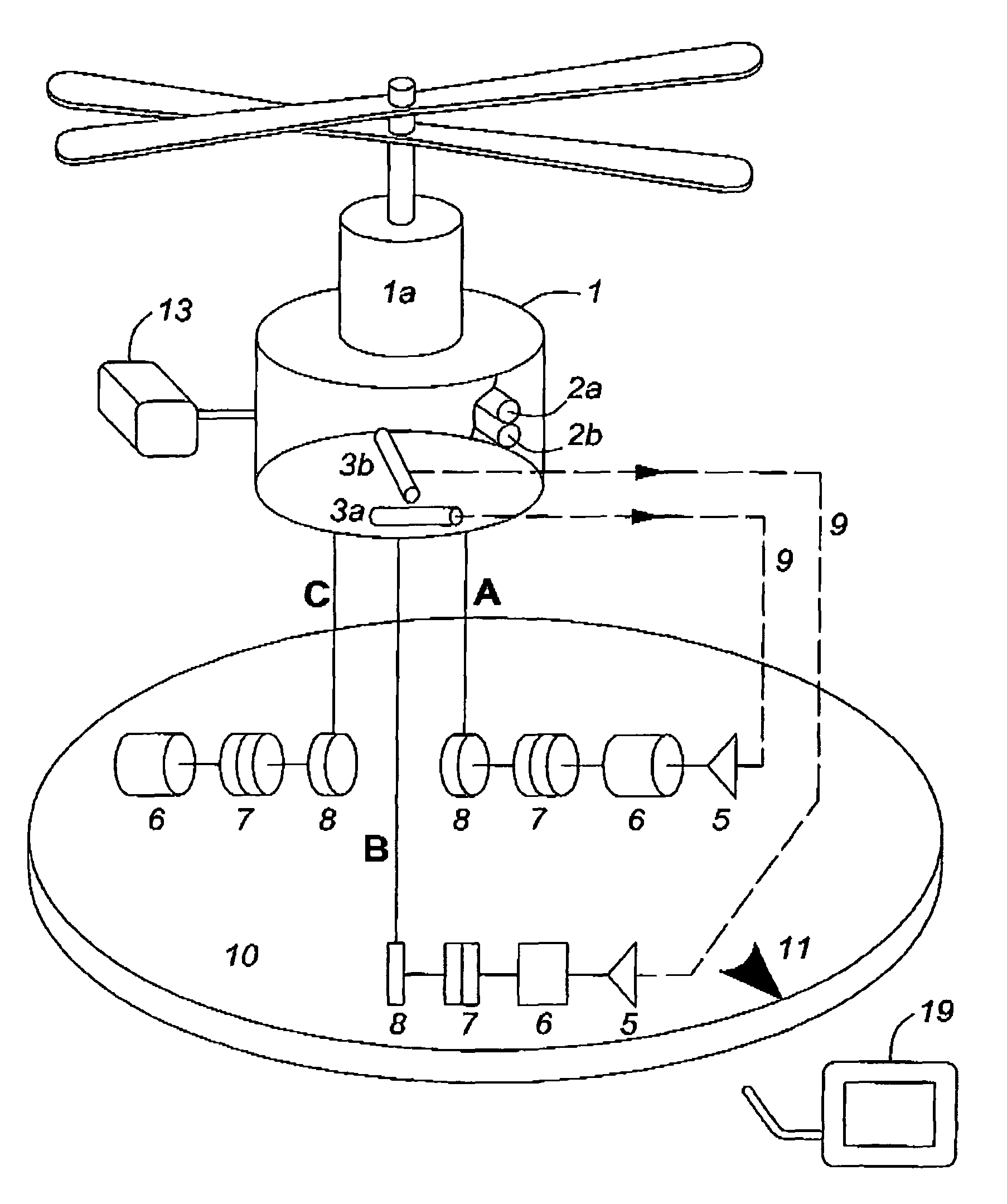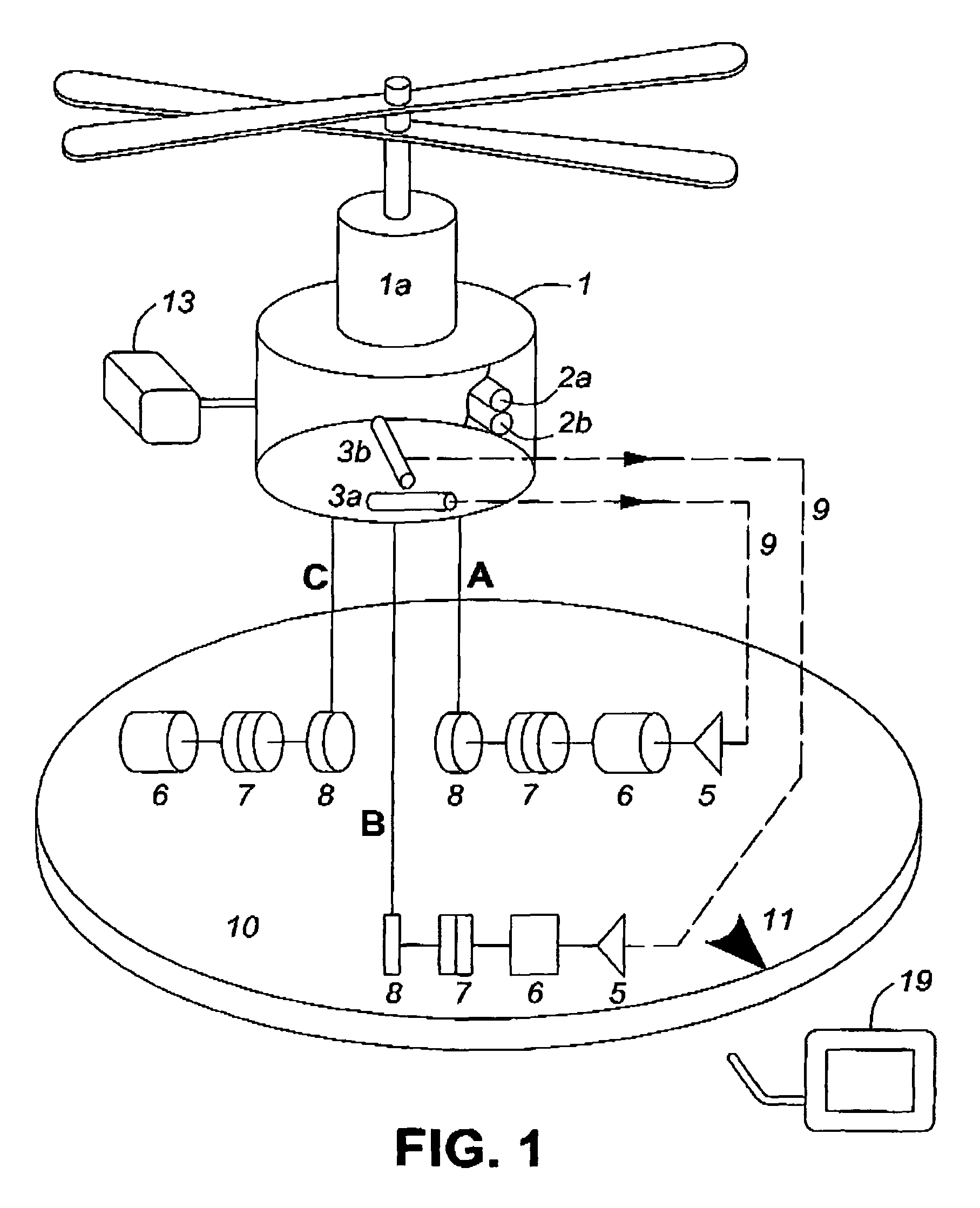Airborne, tethered, remotely stabilized surveillance platform
a surveillance platform and remote stabilizer technology, applied in vehicle position/course/altitude control, process and machine control, instruments, etc., can solve the problems of observation sensors not being able to provide a full-circle view of the surrounding terrain, positioning devices not suitable for maintaining a surveillance platform in a horizontal position, and sensor suite lacks a vertical control loop
- Summary
- Abstract
- Description
- Claims
- Application Information
AI Technical Summary
Benefits of technology
Problems solved by technology
Method used
Image
Examples
Embodiment Construction
[0019]The functional schematic of airborne surveillance platform 1 is illustrated in FIG. 1. Two counter-rotating propellers are driven by electric motor 1a, which receives the required energy from an on-board battery or from a power supply in the vehicle via the conductive tethers. With clutches 7 disengaged, three tethers A, B and C are paid out by reels 8 until the platform reaches an altitude determined by the length of tether C. The reel drives are 120° degrees apart. At this stage, all three clutches 7 are engaged and the tethers are under tension. While the length of tether C remains fixed, the lengths of tethers A and B are adjusted by means of two positional servo-loops as follows. First, the error signal from level sensor 3a is transmitted over wireless link 9 to amplifier 5 which drives motor 6 and reel 8, until the length of tether A is adjusted so that the error signal is minimized and level sensor 3a is horizontal. This sequence of events is then repeated by the servo-...
PUM
 Login to View More
Login to View More Abstract
Description
Claims
Application Information
 Login to View More
Login to View More - R&D
- Intellectual Property
- Life Sciences
- Materials
- Tech Scout
- Unparalleled Data Quality
- Higher Quality Content
- 60% Fewer Hallucinations
Browse by: Latest US Patents, China's latest patents, Technical Efficacy Thesaurus, Application Domain, Technology Topic, Popular Technical Reports.
© 2025 PatSnap. All rights reserved.Legal|Privacy policy|Modern Slavery Act Transparency Statement|Sitemap|About US| Contact US: help@patsnap.com



